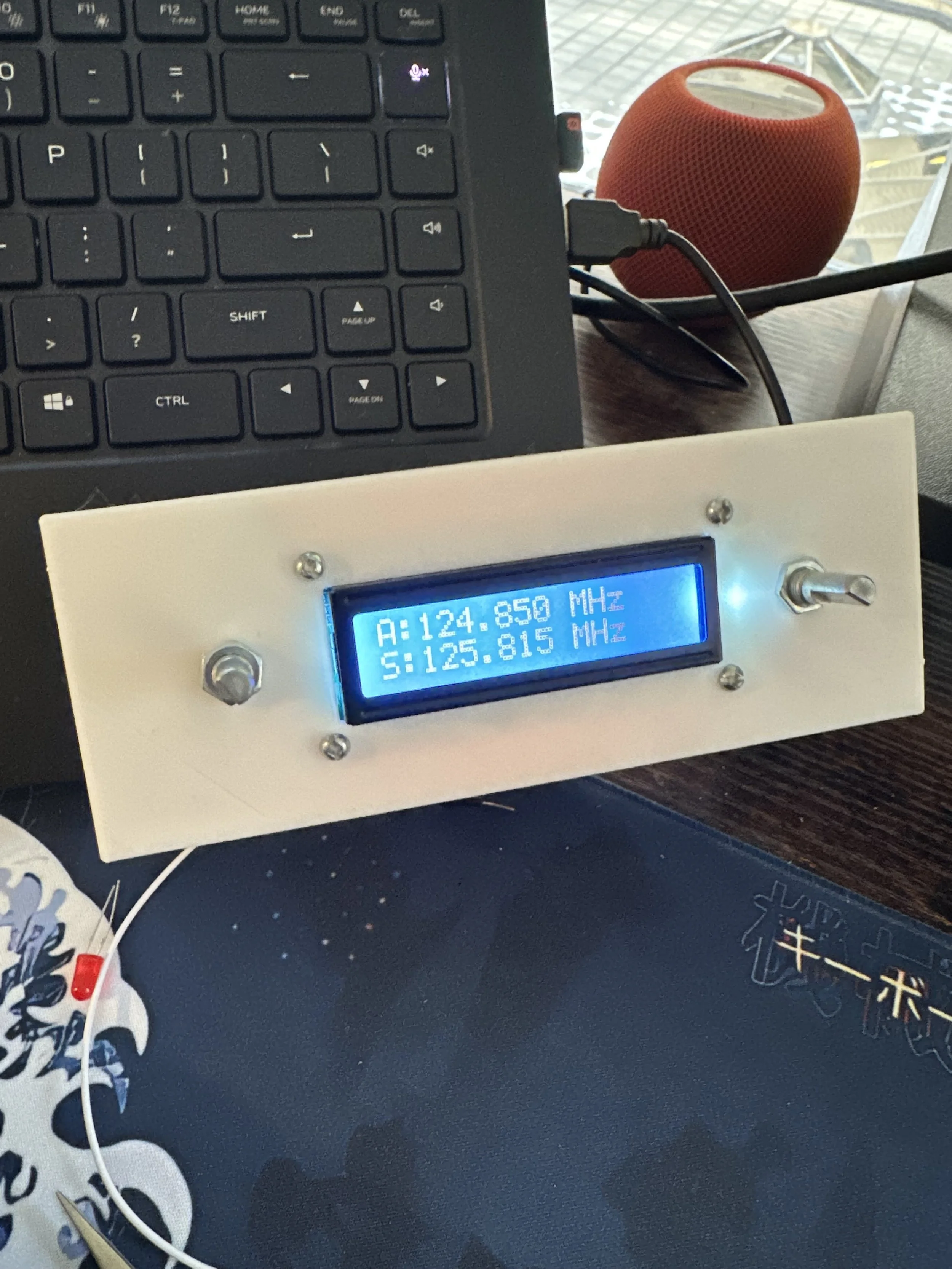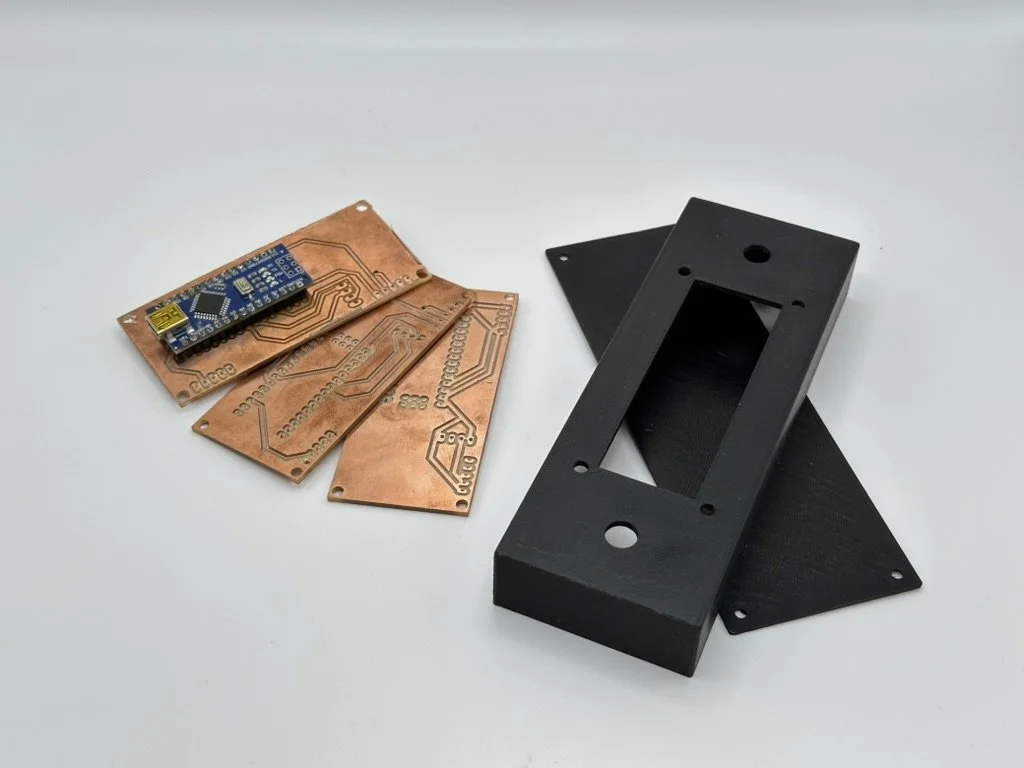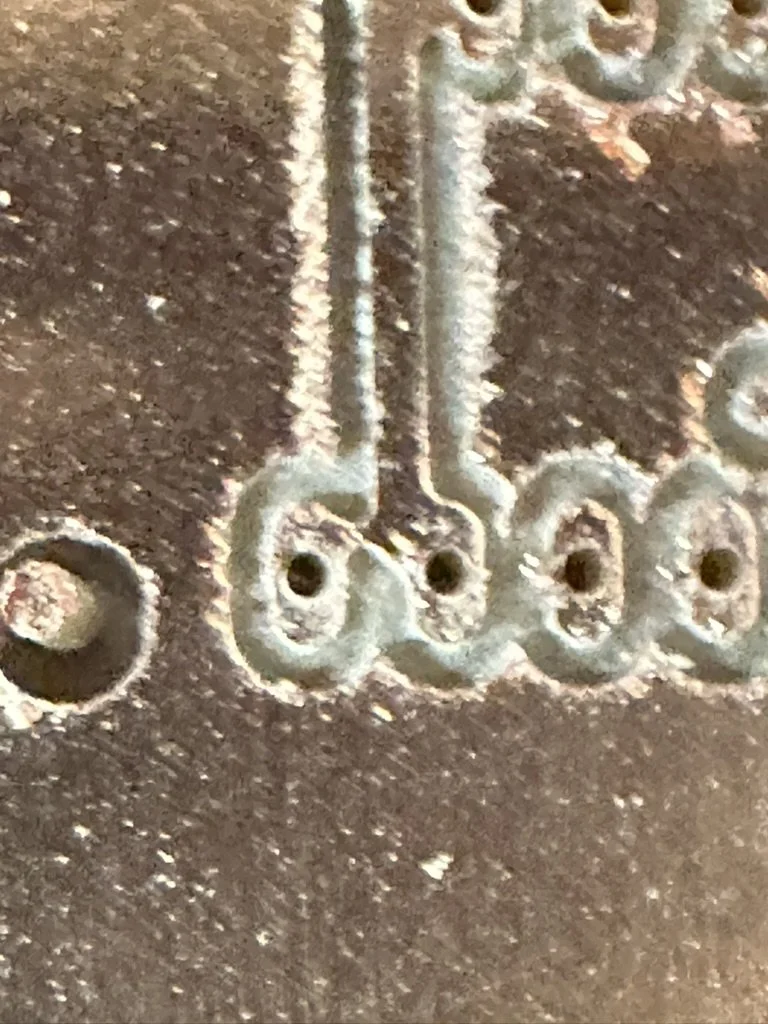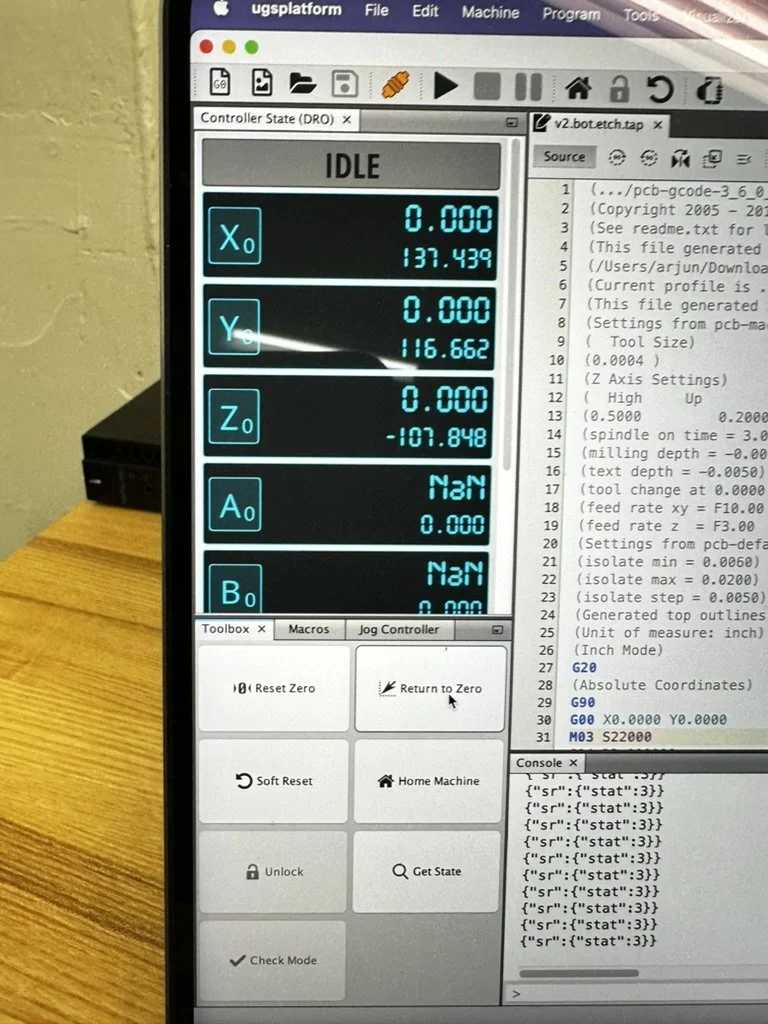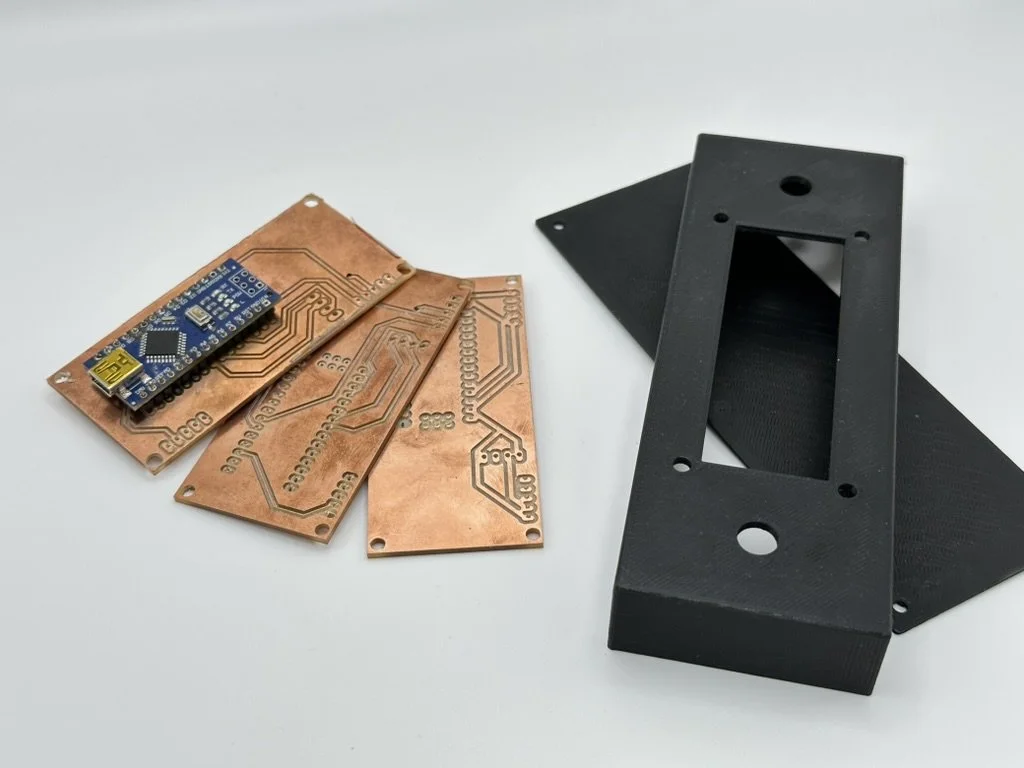My PCB journey
Feb 12 2024 - Jan 15 2025
Flight Simulator Radio
This project was initiated to develop a custom flight simulator radio panel using an Arduino Nano, an LCD display, and two rotary encoders. The primary objective was to design a functional radio tuning panel that interfaced seamlessly with Microsoft Flight Simulator 2020/2024.
Components and Functionality
Arduino Nano: This compact microcontroller serves as the brain of the panel, processing inputs from the encoders and controlling the output display.
LCD Display: The LCD provides real-time information, allowing users to view the current frequencies and settings easily.
Rotary Encoders: These encoders enable intuitive tuning of radio frequencies. Users can rotate the knobs to modify the values, with each click changing the aircraft’s frequency from standby to active.
Exploring Custom PCBs
Initially, I wanted to fabricate my own PCBs instead of relying on protoboards or wiring. I started with a copper-clad plate and attempted to CNC mill my own PCB. However, this process had multiple challenges:
• The CNC-milled traces didn’t provide reliable connections.
• The milling bits kept breaking, making the process inefficient.
• Leveling the drill and setting up the milling depth was tricky.
Additionally, our fabrication lab didn’t have a subscription to Bantam Labs, the standard software for PCB milling. Instead, I had to learn Universal G-Code Sender (UGS), which was very manual and lacked features like probing for surface leveling. This required me to self-learn the CNC machine, troubleshoot issues, and manually adjust drill depths.
Switching to Professional PCB manufacturers
When the CNC-milled PCBs didn’t work as expected, I decided to try PCBWay to manufacture the PCB. This turned out to be a much better solution, as the professionally fabricated PCBs were:
More reliable
Had clean traces
Eliminated manual errors
However, since this was my first PCB design, I still needed manual wiring adjustments to connect the LCD and rotary encoders. One thing I’d change in the future is not to use modules with pre-soldered pins. This makes it harder for me to model around the encoders.
Final Product
For the software side, I used Mobiflight to interface the hardware with Microsoft Flight Simulator 2020. Instead of writing custom firmware from scratch, Mobiflight allowed me to map inputs and outputs, making integrating the panel into my sim setup easier.

